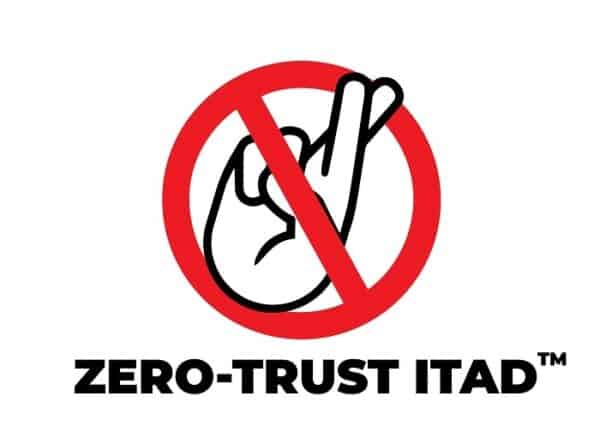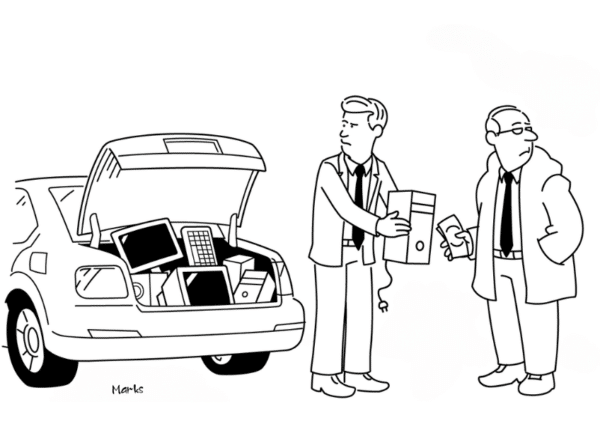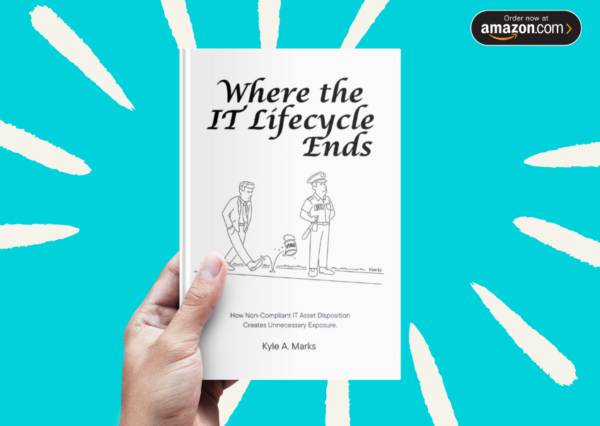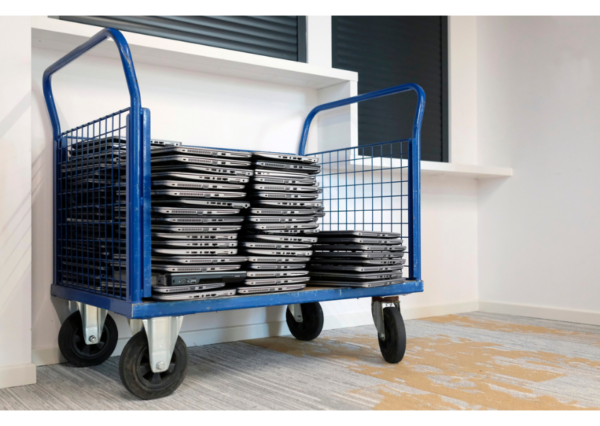When it comes to sensitive data, trust is a luxury today’s organizations can’t afford.
That’s exactly why the Zero-Trust security model has gained acceptance as the go-to framework for network security. But Zero-Trust isn’t just effective in combating modern cyber threats — it’s also the cornerstone of an effective IT asset disposition strategy.
Let’s explore why.
What is Zero-Trust Architecture?
Recent events have shown that traditional network security methods are ineffective against modern security threats.
Serious data breaches, some lasting months or even years, occurred because traditional perimeter-based security failed to prevent or detect incidents.
Zero-Trust moves security away from implied trust. Instead, it utilizes a default deny posture and evaluates trust on a per-transaction basis. Users or devices must always be verified before gaining access.
What Zero-Trust Means for Computer Recycling
Whereas Zero-Trust network access is about permission (Do you have permission to be on this network?) Zero-Trust computer recycling is about possession (Do you have possession of this asset?).
Responsibly disposing of old equipment is a full-time job. Cataloging assets, shipping, tracking, recycling, and remarketing are all time-consuming tasks that distract IT managers from their day-to-day responsibilities. This is why most companies are happy to outsource these processes to an outside vendor.
Unfortunately, many ITAD vendors out there do little to deserve your trust when it comes to handling sensitive equipment.
Assets get lost or stolen in transit, manifests are filled with errors, and equipment is sold off through shady remarketing channels. Worst of all, even though these open your company up to significant financial and legal liability, it’s you, not your vendor, that’s left holding the bag when things go south.
Zero-Trust computer recycling places responsibility back where it should be: with the vendor. With the right procedures in place, you can protect your company from liability by demonstrating that a vendor was solely responsible for a breach.
How to Implement Zero-Trust Computer Recycling
There are 4 crucial steps companies need to take in order to implement an effective Zero-Trust model for their ITAD program. These are:
- Maintaining separation of duties: Establishing processes that validate chain of custody helps foster accountability and eliminate potential losses.
- Not sharing inventory reports with vendors: Disposal vendors must provide an accurate inventory of equipment they received from you. Remember, third-party verification is legally required — don’t let them convince you otherwise.
- Having your equipment held: To prevent problems, require your ITAD vendor to quarantine equipment until all assets have been accounted for. Never allow a vendor to resell or destroy equipment until chain of custody has been established.
- Using disposal tags to establish chain of custody and deter theft: Tracking equipment solely by cataloging serial numbers creates reporting gaps that can make it easier for equipment to be lost or stolen. Disposal tags increase tracking accuracy to nearly 100% and help deter theft by reminding vendors that each piece of equipment will need to be accounted for.
With these precautions in place, executives and IT managers can limit their exposure and help protect themselves in the event of a breach.
Zero-Trust Is a Must for Computer Recycling
New challenges will always require new ways of thinking. No matter how effective your data security has been in the past, it’s imperative that your organization keeps up with industry shifts in order to remain protected.
That’s why Zero-Trust is a must for network access — and why it should extend to your decommissioned IT assets. After all, if you can’t trust devices while they’re on your network, why would you trust them after they’ve been disposed of?
Retire-IT has been providing Zero-Trust computer recycling solutions for almost 18 years. Our proven process and vendor-neutral approach has helped over 1,000 organizations like yours prevent hackers from accessing their network, hold vendors and employees accountable, and keep their assets out of the headlines.
Ready to build a future-proof ITAD strategy? Download our free e-book, The Three P’s of Proper IT Asset Disposition, or reach out to us online to learn how to take back control of your company’s data security.













